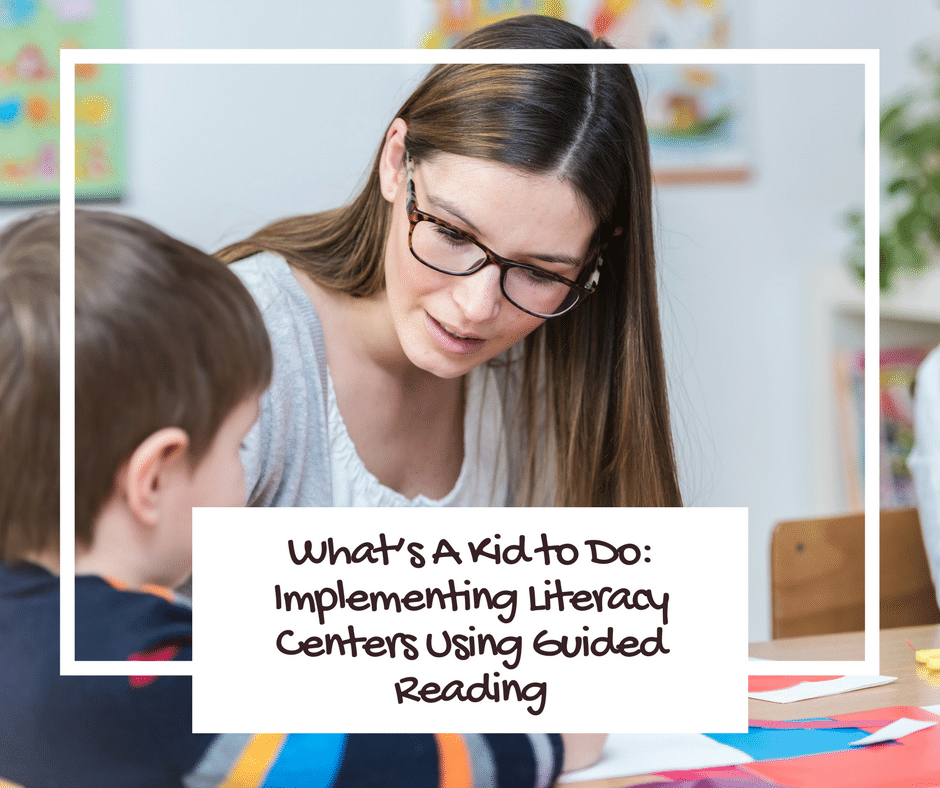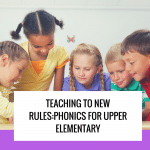Guided Reading is a strategy used in elementary classrooms around the United States for reading instruction. Teachers listen to students read and determine their individual reading level, group students according to fluency and comprehension needs, and teach reading and writing skills within these small groups. You can use canned programs with lesson plans provided, find pre-written lessons, create your own lessons using a template , or take any fiction book and create your own lesson. While learning to read in small groups is very successful, there are still 12-18 students in the classroom. What’s a kid to do?
Learning anything takes practice. Part of the reason kids are drawn to video games and apps is the repetition. I have become addicted to Angry Birds with Friends and I can fling those little birds over and over. I practice and change my angle. I practice my aim. My beginning attempts are not always pretty, but I learn.
Literacy centers are a way for students to practice. Through practice, learning occurs. At first thought, centers can be overwhelming to teachers. You have to find space and supplies to set up centers. You need supplies and materials for the kids to use. There are multiple centers with multiple activities so you have to create a system for rotating students through the centers. This is not something you can purchase, copy, and implement with the simplicity. But there are some simple solutions and step you can take to implementing literacy centers in an elementary classroom.
Setting up Centers—You need an area or a basket for each center you will be using. I like to tie my centers to language arts, although having math centers provides more time for students to practice math during the day. Some center ideas are: reading, writing, poetry, word work, spelling, technology, art, science, social studies, drama, listening, invention, puzzle, handwriting, and partner reading. Depending on your grade level and class size, you should have 6-8 centers. I limit my centers to 3 kids per center.
The Stuff—You have many items in your classroom and thrift stores/garage sales are wonderful places to pick up materials. Board games, flashcards, magazines, newspapers, magnetic letters, pointers and library books are a great start. Use the graphic organizers and printables you use in class and during guided reading. Create a wish list and share with families; they may have items at home you can use in centers.
Management—It is important to match your center rotations system to your personal classroom management and teaching. If you are a teacher lead classroom, you will want to use pocket charts, rotation wheels, or checklists. This will ensure students are working through each station and you dictate when and where they are during your guided reading block. If you are a student lead classroom you can use a chart and allow students to determine when and where they are during the block. With either system, it is important to take the first two weeks of your guided reading time to teach, model, and reinforce the expectations. Setting up the management, in the beginning, will enable your students to quality practice with minimal interruptions to your guided reading groups later. The time invested in setting up management will pay off later.
Focus—Literacy centers should focus on the elements of reading: phonics (matching print to sound), phonemic awareness (isolating and manipulating sounds), fluency (automaticity, accuracy, and expression), comprehension (understanding, applying and synthesizing), and vocabulary (understanding and using words). Providing something novel will increase students’ interest. You should also use items the students have practiced with adults before either at a reading group, during whole class learning or with a parent volunteer. This will increase the chance that centers are focused on reading elements and being done with integrity.
Implementation—Once you have your centers decided, your materials organized and you have practiced getting out supplies, using supplies, and putting supplies away the students are ready to independently practice elements of reading while you work with a small group for guided reading. Students should use the management system you set up (wheel, chart, tic-tac-toe board, etc.) and be engaged in practice. They should use this time to practice the skills you have covered in class because as the old saying goes, “Practice makes perfect!”
Accountability—One of the biggest concerns with literacy centers is, “How do I know they are working?” Centers are student lead and the teacher must relinquish control. If you practice management and set up your expectations, the majority of your students will practice elements of reading and be engaged during their center time. Allow students to share what they are doing in centers with a pair share or in the whole group. Organizing your students in groups that will work effectively will also increase the number of times students are engaged. Keep an eye on your “flight risks”. It is OK to have them come sit beside your reading table or pair them with someone to hold them accountable. Periodically check their work, but remember this is practice. As long as they are engaged in reading and writing activities, it is time well spent. We only get better at something if we practice.
Literacy centers are a key component to successful guided reading practice. This time allows students to practice reading and writing skills that will propel their reading and writing forward. Just as each new week of Angry Birds with Friends provides me with new challenges, centers provide your students with opportunities to practice what you are doing in whole class and guided reading. Review your expectations, check up on their work periodically, and make sure your center items are things students have done with an adult before the activity goes to centers. Allowing students to work in small groups and practice meaningful elements of reading takes more management than having students read silently and work on seat work while you work with groups, but the practice will be worth the effort when you see those skills blossom and become habits in their reading. So, what will your kids do?







Leave a comment